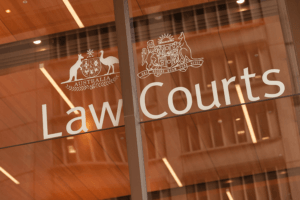Discrimination & Sexual Harassment
National Sexual Assault, Domestic Family Violence Counselling Service: 1800RESPECT (1800 737 732)
Lifeline Australia: 13 11 14
Beyond Blue: 1300 22 4636
Mental Health Line: 1800 011 511
Talk with an Aboriginal or Torres Strait Islander Crisis Supporter: 13YARN 13 92 76 (24 hours/7 days)
Rainbow Sexual, Domestic and Family Violence Helpline: 1800 497 212 (10am-5pm/7 days)
Blue Knot Foundation: 1300 657 380 (Available 9 am to 5 pm AEST)
- phone and email-based support for adult survivors of childhood trauma and abuse, as well as for their supporters and the professionals who work with them
If you need immediate help or danger, call 000.
What is Discrimination?
Discrimination refers to the unfair treatment of people based on their race, gender, age, sexuality, religion, ect. This can happen in many different areas of life, including the workplace, housing, education, and the criminal justice system.
In 1989, the High Court confirmed that discrimination involved the unjustified distinction where different treatment is given because of attributes that are irrelevant to the purpose it is aiming to obtain.
Our lawyers are committed to fighting discrimination and promoting equality for all.
Direct discrimination:
- When a person is treated less favourable than another person in a similar situation.
- It is about the comparative treatment of people.
- Direct discrimination generally occurs when a person gets treatment that is less favourable on the ground of an unacceptable consideration, such as sex or race. For example, not offering a woman a job as she might become pregnant in the future.
Indirect discrimination:
- This occurs where there is a condition or requirement that applies to everyone equally. However, the actual application affects a person or a particular group without justification.
- This form of discrimination is concerned about the impact and is more subtle. For example, in Daghilian v Australian Postal Corporation (2003), Australia Post introduced a new policy that banned stools at retail counters. This was indirect discrimination against Daghilian. She had a physical disability that prevented her from standing for extensive periods of time. The condition was not considered reasonable, as there was no evidence the stool would harm Daghilian or other employees.
Victimisation:
- treating someone unfairly because they have made a complaint or raised concerns about discrimination, or because they have supported someone else in doing so.
Adverse Action
Adverse action refers to discriminatory or retaliatory actions taken by an employer, landlord, or other person or entity
Examples of adverse action include:
- firing an employee because of their race
- refusing to rent an apartment to someone because of their religion
- denying someone a loan because of their gender.
- can also include actions that are not taken, such as failing to promote an employee because of their age or national origin.
Individuals have the right to take legal action if they believe they have been subject to adverse action.
Racial Discrimination
Racial discrimination refers to the unfair treatment of people based on their race or ethnicity.
Examples of racial discrimination include:
- denying a job to someone because of their race
- refusing to rent an apartment to someone because of their ethnicity
- treating someone differently because of their skin colour.
Racial discrimination is illegal under Racial Discrimination Act 1975 and those who have experienced racial discrimination have the right to take legal action against the person or entity responsible.
The Australian Human Rights Commission (AHRC) is responsible for enforcing the Racial Discrimination Act and investigating complaints of racial discrimination.
What is sexual harassment and how does it fit with discrimination?
Harassment and sexual harassment are a form of direct discrimination. This is as it is detrimental treatment on the basis of a protected attributed, namely sex.
Sexual harassment is unlawful in every State and Territory jurisdiction as well as Federally. The definitions of sexual harassment in State and Federal law are relatively similar. Section 28 of the Sex Discrimination Act 1984 (Cth) defines sexual harassment:
“as unwelcome conduct of a sexual nature that could cause the victim to feel offended, humiliated or intimidated in circumstances in which a reasonable person, having regard to all the circumstances, would have anticipated the possibility that the person harassed would be offended, humiliated or intimidated.”
There is no singular definition of “conduct” of a sexual nature. However, it has interpretation widely to include sexual questions or sending emails containing sexual jokes and cartoons.

Proving sexual harassment has occurred
There are many elements to satisfy to prove sexual harassment.
- The conduct must be unwelcome. The victim did not solicit or invite the conduct. The victim regarded the conduct as undesirable or offensive.
- In circumstances where a reasonable person would have anticipated the possibility that the victim could experience offence, humiliation or intimidation. Whether the perpetrator should have anticipated the victim’s response in the circumstances.
How to action a case for discrimination
Other than in Victoria, there is no direct right of access to the courts to initiate proceedings for a breach of anti-discrimination legislation. All remaining States and Federal jurisdictions have a compulsory two stage enforcement model.
First, you must lodge a complaint to the relevant statutory body. In NSW complainants can choose between the Anti-Discrimination Board of NSW or the Australian Human Rights Commission.
Sometimes, a complainant may have no choice but to choose the state jurisdiction over the federal or vice versa. For example, if you are complaining about Centrelink, which is a federal department, then you need to lodge the complaint in the federal jurisdiction.
The complaint has to:
- Be in writing; and
- Demonstrate the:
- grounds of discrimination, such as sex or disability;
- the area of discrimination, such as employment; and
- articulate the type of discrimination, either direct or indirect.
Complaints without legal representation often take the form of long narratives that do not articulate – in a legally recognised form – the allegations of unlawful discrimination. Complaints that do not demonstrate unlawful discrimination according to the legislation risk termination from the outset.
In the AHRC, complaints lodged after 6 months of the incident may be terminated. In NSW, the discretion to terminate a complaint kicks in after 12 months of the incident.
Investigating the complaint
Once a complaint is accepted the next stage involves investigating the complaint, which usually looks like:
- Notification – First the respondent gets notification of the complaint;
- Investigation – Next, the statutory body can compel people to provide documents which may assist in the investigation of the complaint,
- Clarification – Then the respondent can ask further questions to clarify the complaint against them.
- Conciliation – After the process of inquiry finalises, the parties attend a conciliation to attempt to resolve the matter.
Most complaints resolve at this stage of the complaint process. However, if the complaint does not reach a resolution then the complaint terminates.
Other than in Victoria, termination of the complaint is a pre-condition before a complainant can litigate their claim in the relevant court or tribunal. Litigating a discrimination claim in court is similar to other civil litigation in those courts.
Legal costs: NSW v Federal Jurisdiction
If the complaint is terminated, then you can litigate a complaint in the corresponding court or tribunal.
Anti-discrimination board – NSW Civil & Administrative Tribunal (NCAT)
So, in NSW, after a complaint terminates, you can litigate a claim in the NSW Civil & Administrative Tribunal (NCAT).
NCAT is a non-cost jurisdiction, meaning that parties bear their own costs of running the case. There are limited circumstances as to when a party can claim some of their costs back. However, this generally requires grossly unreasonable conduct.
In NCAT, the award of damages for the applicant has a cap of $100,000 for each respondent. For example, in Yelda v Sydney Water Corporation & Anor [2021], NCAT calculated the applicant’s damages as $318,280. However, as damages in NCAT have a cap, the applicant received $200,000.
Australian Human Rights Commission – Federal or Federal Circuit Court
If a complaint terminates in AHRC, you can litigate the claim in the Federal or Federal Circuit Court.
At the Federal or Federal Circuit Court, costs follow the event. Meaning, the winning side can claim some of their costs back. This is important, as if your discrimination claim is unsuccessful, then you may have a liability to pay the other side’s costs.

